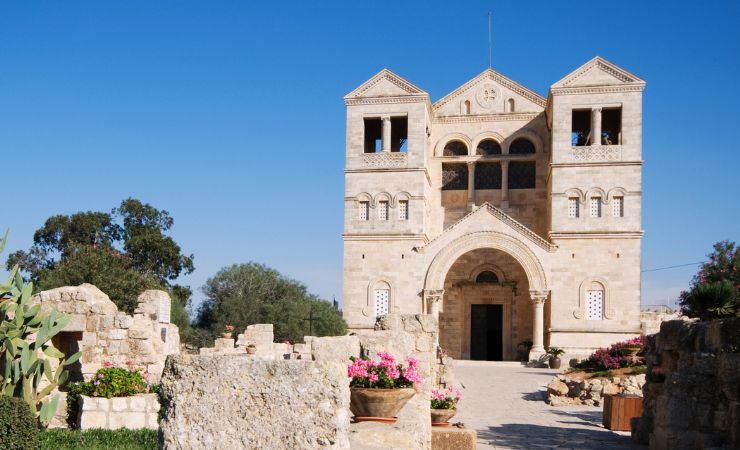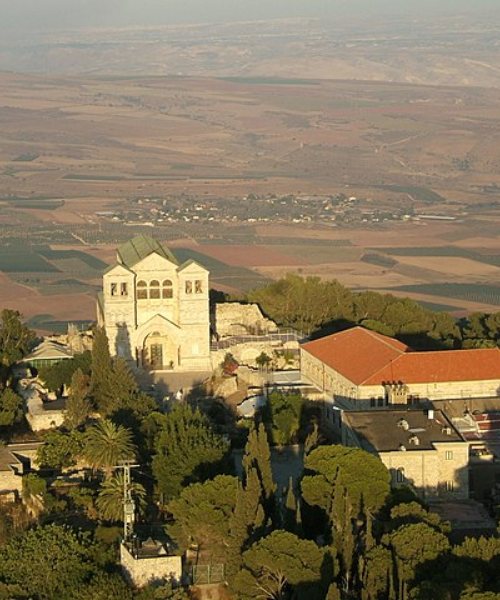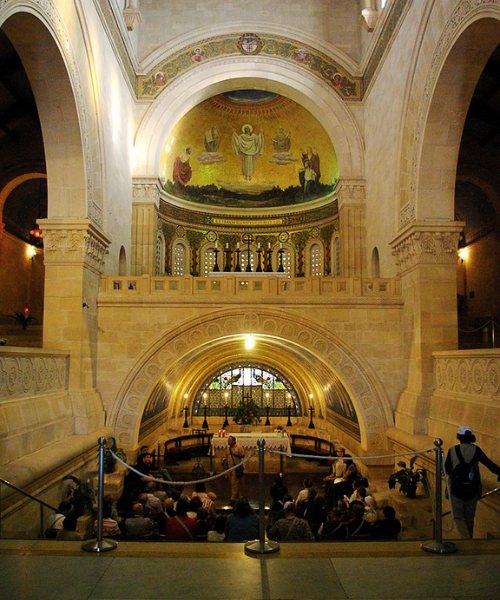The Exciting Church of the Transfiguration on Mount Tabor
Mount Tabor, reverberating with biblical echoes, is the reputed site of the Transfiguration of Jesus. The Church of the Transfiguration was built by Architect Antonio Barluzzi for the Franciscan Catholics as a historical and architectural jewel.

Location
The Church of Transfiguration sits atop Mount Tabor in the Lower Galilee region of Israel. This mountain, rising amidst the Jezreel Valley, is located about 18 kilometers west of the Sea of Galilee. You can reach the church by taking the winding road that leads to the summit and into the Franciscan Monastery area, where the church stands as the major attraction.
Biblical Context of the Transfiguration of Jesus
The Church of the Transfiguration is believed to be the site where Jesus was transfigured before Peter, James, and John, and conversed with Moses and Elijah. The New Testament records this event in three of the Gospels.



The Work of Master Architect Antonio Barluzzi
The Church of Transfiguration, situated atop the serene Mount Tabor, owes its present architectural grandeur to Antonio Barluzzi, an Italian architect appointed by the Franciscans in the early 20th century.
This appointment was part of a concerted effort to restore and rebuild churches that had been destroyed or fallen into disrepair during the Ottoman period. Antonio Barluzzi left an indelible mark on the holy sites in Israel, earning him the prestigious title, “Architect of the Holy Land”.
The construction of the Church of Transfiguration commenced in 1924. The church was built upon the ruins of a Byzantine church from the 4th-6th centuries and a 12th-century church from the Crusader period.
Barluzzi’s architectural style for the Church of Transfiguration was influenced by Syrian tradition. Specifically, the facade of the church is reminiscent of the architectural style that developed in Syria between the 4th and 6th centuries and mimic the Church of Saint Simeon Stylites in Alepo, Syria. This style was not limited to interior ornamentation but also emphasized the monumental aspect of the exterior.
The Church of Transfiguration is built of light-colored limestone, and its facade features two towers with a round-headed arch in between. The windows of the church are framed with volutes, adding to the classical aesthetic.
The Church houses three grottoes that have been described as representing the three tabernacles that Peter wished to build for Jesus, Moses, and Elias. Moreover, there are two chapels located in the towers at the west front of the church: the Chapel of St. Elias and the Chapel of Moses. The Chapel of Moses features a mosaic pavement with crosses, signifying its construction prior to 422 when Emperor Theodosius II prohibited the representation of crosses in mosaic pavements.
Archaeological Findings at the Church of Transfiguration
- Grottoes: The church contains three Grottoes, which are believed to have been part of the ancient Byzantine church.
- Walls from the Crusader church: In the eastern part of the church, steps lead down to a lower level with a sanctuary enclosed by walls belonging to the Crusader church and roofed with a modern barrel vault.
- Mosaic pavement: The original mosaic pavement from the Crusader church is incorporated into the floor of the Chapel of Moses.
Sources and Additional Reading
Church of the Transfiguration – Wikipedia
Mount Tabor – Basilica of the Transfiguration | Custodia Terrae Sanctae
Sites Nearby the Church of Transfiguration
- Nazareth: Known as the childhood home of Jesus, Nazareth is brimming with religious sites, including the Basilica of the Annunciation and Mary’s Well.
Nein: The Churchat Nein is a quaint church that marks the biblical location where Jesus is believed to have resurrected a widow’s son.
- Mount Precipice: Enjoy breathtaking views from the place where it is traditionally believed is the site where an angry mob attempted to throw Jesus off the cliff after his bold proclamation in the synagogue of Nazareth
- Sea of Galilee: A freshwater lake that holds immense significance as the backdrop for several of Jesus’s miracles, including walking on water the multiplication of the loaves and fishes, and where he delivered the Sermon on the Mount.
- Zippori National Park: Just a short drive from Nazareth, this park is home to ancient ruins, including a Roman-era theater. mosaics, and an ancient synagogue.



